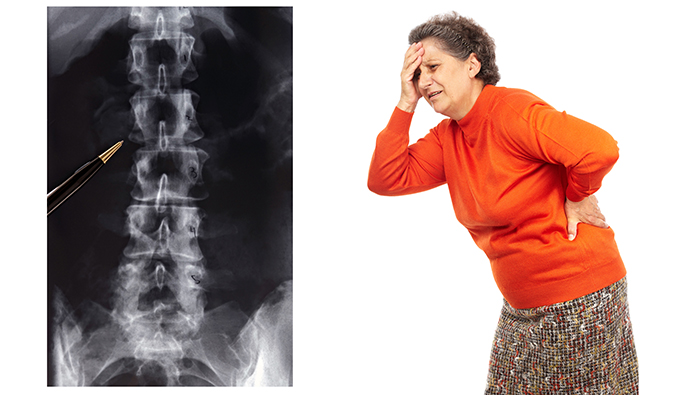
As people age, they become more likely to develop osteoporosis, a disease that occurs when bones lose density and mass. This can cause bones to be brittle, weak and easily broken. The good news is, if you're at risk of osteoporosis, there are proactive measures you can take to monitor your bone health.
How common is osteoporosis?
Osteoporosis is more common in women than men. For those age 65 and older, it affects about 1 in 4 women and 1 in 20 men. It is responsible for 2 million broken bones every year and studies suggest that approximately half of women and a quarter of men age 50 and older will break a bone, due to osteoporosis. The number of older adults with osteoporosis is likely to significantly increase as the U.S. population ages.
Osteoporotic bone breaks most often occur in the hip, spine or wrist, but other bones can break, too. Beyond significant and often permanent pain, these fractures can have many other consequences, including frailty and limited mobility, complications related to the broken bone itself or the surgery to repair it, plus the necessity of long-term care and institutionalization.
How is it diagnosed?
Talking to your doctor can help ensure you get the test that may be needed to correctly diagnose osteoporosis, which may be a simple bone mineral density (BMD) test. BMD tests can identify osteoporosis before a broken bone occurs and measure your response to osteoporosis treatment.
What is a BMD test?
The test lasts about 15 minutes or less. You usually lie down clothed, and the X-ray emitter is passed over parts of your body more likely to show signs of mineral loss, which often means your spine and hip bones, but can include other stress areas like wrists, fingers and heels.
Should I get tested?
BMD tests are recommended for women age 65 or older and men age 70 or older. Osteoporosis is more common after menopause, so women should begin talking to their doctor before menopause. Anyone with several of these risk factors - both controllable and uncontrollable - should also discuss it with their doctor, even if they are younger than the general guidelines.
Consider asking your provider if you should complete a bone density test to determine how healthy your bones are. If you're a UnitedHealthcare member, you might get a call offering an osteoporosis screening that wouldn't require a referral from your provider.
What do the test results mean?
Your doctor will discuss your bone density test with you, and help you interpret the results. If you are a pre-menopausal woman or a man under the age of 50, it is likely that your results will be compared to the average bone density of someone your age. If you are a man older than 50 or a post-menopausal woman, your bone density is measured against the typical bone density of a healthy 30-year-old of your same gender and reported in something called a T-score, according to the World Health Organization.
* A score of -1.0 or above is normal bone density.
* A score of -1.0 to -2.5 shows that calcium and other minerals in your bones are decreasing, a condition called osteopenia or low bone mass.
* A score of -2.5 or below is diagnosed as osteoporosis.
* A score of -2.5 or below with a history of a fracture is considered severe osteoporosis.
Although not everyone who has osteopenia will develop osteoporosis, those with low bone mass are at higher risk of breaking bones and need to be regularly evaluated with a BMD test.
How often should you be tested?
BMD testing frequency depends on factors including age, past bone density results and whether you are taking an osteoporosis treatment. Those at a higher risk for osteoporosis (for example, estrogen-deficient women, those on glucocorticoid or some other steroid therapy and those with primary hyperparathyroidism) may need earlier and more frequent testing. Be sure to discuss your specific needs with your health care provider.
What else should I know?
There is no one single way to ensure healthy bones, but there are many great habits that can help put you on the right path:
* Incorporate enough calcium and vitamin D in your diet
* Avoid smoking and drinking alcohol or caffeinated beverages
* Take steps to minimize your risk of falls.
Increasing the amount of exercise can also help, especially regular weight-bearing routines, but any exercise - even yoga - can help keep your bones stronger for longer.
If you have been diagnosed with osteoporosis or have had fractures, talk with your doctor about medication options, which can vary based on gender, age, bone health and other factors.